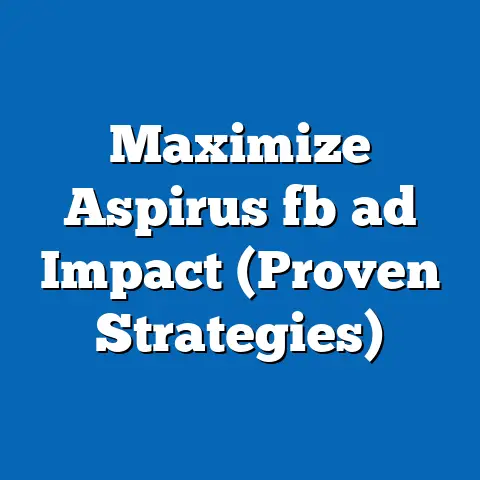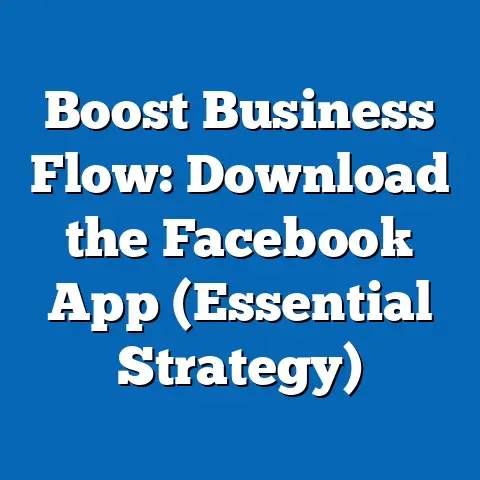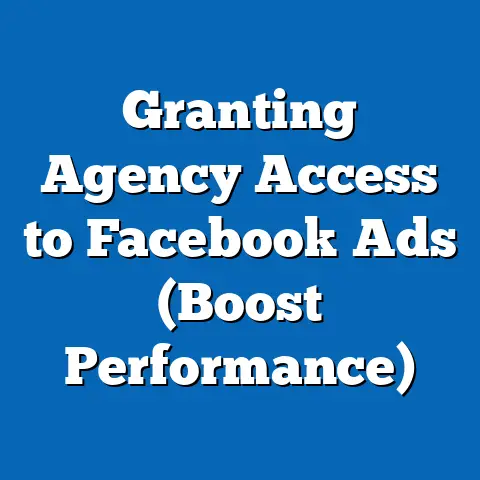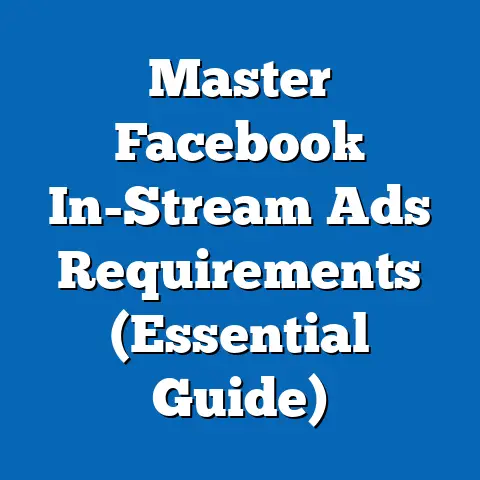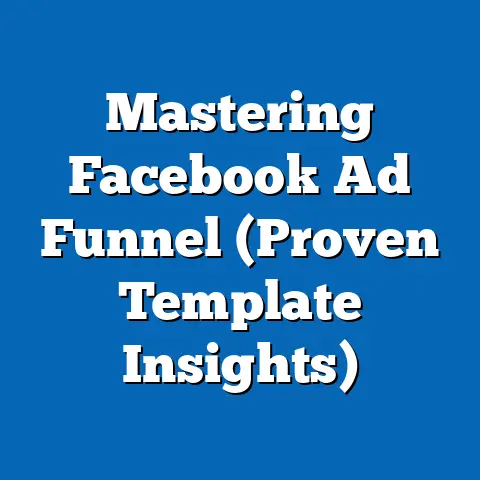Write Persuasive Facebook Ad Copy (Proven Techniques)
Have you ever felt like your voice is lost in the digital noise? I remember talking to Sarah, a passionate baker who poured her heart and soul into creating the most delicious, artisanal breads in town. She knew her product was superior, but her Facebook ads felt like shouting into a void. She invested time and money, but her ads failed to resonate. She felt invisible, and her business was suffering.
Sarah’s story isn’t unique. Many small business owners and marketers struggle to cut through the clutter and connect with their target audience on Facebook. They create ads, but they don’t feel like they’re speaking directly to their customers. This can lead to frustration, wasted ad spend, and a feeling of hopelessness.
Then, Sarah discovered the power of persuasive Facebook ad copy. She learned how to craft messages that spoke directly to her ideal customers, addressing their needs and desires in a way that felt authentic and compelling. The results were transformative. Her sales skyrocketed, her brand gained recognition, and she rediscovered the joy in sharing her passion with the world.
Section 1: Understanding Your Audience
Before you write a single word of ad copy, you need to know who you’re talking to. Think of it like this: you wouldn’t tell a joke to a room full of strangers without knowing something about them, right? The same principle applies to Facebook advertising. Knowing your audience is not just important; it’s absolutely crucial for creating ad copy that resonates and drives results.
Demographic and Psychographic Factors
Demographics are the statistical characteristics of a population. These include things like age, gender, location, income, education, and occupation. For example, if you’re selling luxury watches, you’ll likely target an older demographic with a higher income.
Psychographics, on the other hand, delve into the psychological aspects of your audience. These include their values, interests, lifestyle, attitudes, and personality traits. Understanding psychographics allows you to craft ad copy that appeals to their emotions and motivations. For instance, if you’re selling eco-friendly products, you’ll want to target individuals who value sustainability and environmental responsibility.
I remember when I was working on a campaign for a fitness app, we initially focused solely on demographics, targeting people aged 25-45 who lived in urban areas. While we saw some initial traction, the results were underwhelming. It wasn’t until we started incorporating psychographics, targeting people who were interested in healthy living, mindfulness, and outdoor activities, that our engagement and conversion rates truly took off. This taught me the power of understanding the “why” behind people’s purchasing decisions.
Customer Personas: Your Ideal Audience
A customer persona is a semi-fictional representation of your ideal customer, based on research and data about your existing customers. Creating customer personas helps you visualize and understand your target audience on a deeper level.
To create a customer persona, gather as much information as possible about your ideal customer. Consider:
- Demographics: Age, gender, location, income, education, occupation
- Psychographics: Values, interests, lifestyle, attitudes, personality traits
- Goals and Challenges: What are they trying to achieve? What obstacles are they facing?
- Pain Points: What frustrates them? What problems are they trying to solve?
- Buying Behavior: How do they research products or services? What influences their purchasing decisions?
Give your persona a name and a face. This will make them feel more real and help you empathize with their needs and desires. For example, you might create a persona named “Eco-Conscious Emily,” who is a 30-year-old marketing professional who values sustainability and is looking for eco-friendly alternatives to everyday products.
Effective Audience Segmentation
Audience segmentation involves dividing your target audience into smaller, more specific groups based on shared characteristics. This allows you to tailor your messaging to resonate with each segment, leading to higher engagement and conversion rates.
Facebook offers a variety of targeting options that allow you to segment your audience based on demographics, interests, behaviors, and connections. You can also create custom audiences based on your existing customer data, such as email lists or website visitors.
For example, if you’re selling a software product, you might segment your audience based on industry, company size, or job title. This allows you to create ad copy that speaks directly to the specific needs and challenges of each segment.
Takeaway: Understanding your audience is the foundation of persuasive ad copy. By focusing on demographics, psychographics, and customer personas, you can craft messages that resonate and drive results. Start by researching your target audience and creating detailed customer personas. Then, use Facebook’s targeting options to segment your audience and tailor your messaging to each segment.
Section 2: Crafting Compelling Headlines
Your headline is the first thing potential customers see when they encounter your Facebook ad. It’s your first and often only chance to grab their attention and entice them to learn more. In a world saturated with information, a compelling headline is the key to standing out from the crowd.
The Significance of Headlines
Think of your headline as the storefront window of your business. It needs to be attractive, intriguing, and relevant to what you’re selling. A weak or generic headline will likely be ignored, while a strong and compelling headline will pique curiosity and encourage clicks.
I’ve seen countless campaigns where a simple change in the headline resulted in a dramatic increase in click-through rates. It’s a testament to the power of a well-crafted headline. One campaign I worked on promoted a webinar about digital marketing. The original headline was simply “Digital Marketing Webinar.” After A/B testing several variations, we found that “Unlock the Secrets to Digital Marketing Success” performed significantly better. The key was the use of “secrets” and the promise of “success,” which tapped into the audience’s desire for knowledge and achievement.
Proven Techniques for Attention-Grabbing Headlines
There are several proven techniques for writing headlines that grab attention and entice clicks:
- Use Numbers: Numbers are naturally eye-catching and can convey specific benefits or results. Examples: “5 Ways to Boost Your Productivity,” “10 Tips for a Healthier Lifestyle.”
- Pose Questions: Questions can pique curiosity and encourage readers to click to find the answer. Examples: “Are You Making These Common Marketing Mistakes?” “Want to Lose Weight Fast?”
- Invoke Curiosity: Tease readers with intriguing information that makes them want to learn more. Examples: “The Shocking Truth About Coffee,” “What Your Doctor Isn’t Telling You.”
- Use Strong Adjectives: Powerful adjectives can add emotion and excitement to your headlines. Examples: “Amazing New Product,” “Incredible Savings,” “Unbelievable Opportunity.”
- Address Pain Points: Directly address the problems or frustrations of your target audience. Examples: “Tired of Sleepless Nights?” “Struggling with Debt?”
Analyzing Successful Facebook Ad Headlines
Let’s take a look at some examples of successful Facebook ad headlines and analyze what makes them effective:
- “Learn a new language in just 15 minutes a day.” (Duolingo) This headline uses a specific number (15 minutes) and promises a tangible benefit (learn a new language).
- “Are you ready to transform your body?” (Fitness App) This headline poses a question that appeals to the audience’s desire for self-improvement.
- “The secret to flawless skin is finally revealed.” (Skincare Product) This headline invokes curiosity by teasing a “secret” and promising a desirable outcome (flawless skin).
- “Get 50% off all items this weekend only!” (Retail Store) This headline uses a strong number (50%) and creates a sense of urgency (this weekend only).
The Balance Between Creativity and Clarity
While creativity is important, it’s crucial to strike a balance between creativity and clarity. Your headline should be attention-grabbing, but it should also clearly communicate what your ad is about. Avoid using overly clever or ambiguous language that might confuse your audience.
Takeaway: Your headline is your first and often only chance to make a good impression. Use proven techniques like numbers, questions, curiosity, and strong adjectives to grab attention. Analyze successful headlines to learn what works, and always prioritize clarity over creativity.
Section 3: Writing Engaging Body Copy
Once you’ve captured your audience’s attention with a compelling headline, it’s time to reel them in with engaging body copy. This is where you have the opportunity to tell a story, address their pain points, and position your product or service as the solution.
Elements of Persuasive Body Copy
Persuasive body copy is more than just a list of features and benefits. It’s a carefully crafted narrative that connects with your audience on an emotional level and motivates them to take action. Here are some key elements of persuasive body copy:
- Storytelling: Humans are wired for stories. Use storytelling to create a connection with your audience and make your message more memorable. Share a personal anecdote, a customer testimonial, or a case study that illustrates the benefits of your product or service.
- Emotional Triggers: Tap into the emotions of your target audience. What are their hopes, fears, dreams, and aspirations? Use language that evokes these emotions and creates a sense of connection.
- Relatable Language: Use language that your audience understands and relates to. Avoid jargon or technical terms that might confuse or alienate them. Speak to them in a conversational tone, as if you were having a one-on-one conversation.
- Addressing Pain Points: Identify the pain points of your target audience and address them directly. Show them that you understand their struggles and that you have a solution to their problems.
- Positioning as the Solution: Position your product or service as the solution to their pain points. Highlight the benefits and outcomes that they can expect to achieve by using your product or service.
The Importance of Social Proof
Social proof is the idea that people are more likely to take action if they see that others are doing it too. This can be a powerful tool for enhancing credibility and building trust.
There are several ways to incorporate social proof into your Facebook ad copy:
- Testimonials: Include quotes from satisfied customers that highlight the benefits of your product or service.
- Case Studies: Share detailed accounts of how your product or service has helped other customers achieve their goals.
- Reviews: Showcase positive reviews from reputable sources, such as industry publications or customer review websites.
- Statistics: Use statistics to demonstrate the popularity or effectiveness of your product or service. For example, “Join over 10,000 satisfied customers!”
Maintaining a Conversational Tone
One of the biggest mistakes I see in Facebook ad copy is a tone that is too formal or salesy. People are scrolling through their feeds looking for connection and entertainment, not to be bombarded with sales pitches.
The key to writing engaging body copy is to maintain a conversational tone. Imagine you’re talking to a friend or colleague. Use natural language, avoid jargon, and speak from the heart.
I once worked with a local coffee shop that was struggling to attract new customers. Their original ad copy was dry and uninspired, simply listing their menu items and prices. I suggested they try a more conversational approach, sharing the story of how they started their business and the passion they put into every cup of coffee. The response was incredible. People were drawn to the authenticity and the personal connection, and their sales increased dramatically.
Takeaway: Engaging body copy is about more than just listing features and benefits. It’s about telling a story, connecting with your audience on an emotional level, and positioning your product or service as the solution to their pain points. Use social proof to enhance credibility and maintain a conversational tone to build trust.
Section 4: Call to Action
You’ve crafted a compelling headline and engaging body copy. Now, it’s time to tell your audience what you want them to do. This is where the Call to Action (CTA) comes in.
What is a Call to Action?
A Call to Action (CTA) is a phrase or button that prompts your audience to take a specific action, such as visiting your website, making a purchase, or signing up for a newsletter. It’s the final piece of the puzzle that guides your audience from awareness to action.
Without a clear CTA, your ad may be interesting, but it won’t drive the desired results. It’s like inviting someone to a party without telling them where or when it is.
Tailoring CTAs to Fit Various Goals
The best CTA for your ad will depend on your specific goals. Here are some examples of CTAs that are tailored to different objectives:
- Website Traffic: “Learn More,” “Visit Our Website,” “Explore Now”
- Lead Generation: “Sign Up,” “Download Now,” “Get a Free Quote”
- Sales: “Shop Now,” “Buy Now,” “Add to Cart”
- App Installs: “Install Now,” “Download App”
- Engagement: “Like Our Page,” “Share This Post,” “Comment Below”
I learned the importance of tailoring CTAs when I was working on a campaign for a non-profit organization. Their original ad copy used a generic “Donate Now” CTA, which didn’t resonate with the audience. I suggested they try a more specific CTA, such as “Give Hope Today” or “Help Us Save Lives.” The response was significantly better, as the new CTAs evoked a stronger emotional response and made the call to action more compelling.
Analyzing Effective CTAs in Facebook Ads
Let’s take a look at some examples of effective CTAs in Facebook ads and analyze their components:
- “Shop Now” (Clothing Retailer) This CTA is simple, direct, and clearly communicates the desired action.
- “Get a Free Quote” (Insurance Company) This CTA offers a valuable incentive (a free quote) and encourages potential customers to take the next step.
- “Sign Up for Our Newsletter” (Marketing Agency) This CTA is clear and concise, and it offers a benefit (staying informed) to the audience.
- “Download Our Free Ebook” (Software Company) This CTA offers a valuable resource (a free ebook) and positions the company as an authority in its field.
The Importance of Urgency and Scarcity
Urgency and scarcity are powerful psychological triggers that can prompt immediate action. By creating a sense of urgency or scarcity, you can encourage your audience to take action now, rather than putting it off for later.
Here are some ways to create urgency and scarcity in your CTAs:
- Limited-Time Offers: “Sale Ends Tonight!” “Offer Valid for 24 Hours Only”
- Limited Quantities: “While Supplies Last!” “Only 10 Items Left in Stock”
- Exclusive Access: “Join Our VIP List for Exclusive Access”
Takeaway: Your CTA is the final piece of the puzzle that guides your audience from awareness to action. Tailor your CTAs to fit your specific goals, analyze successful CTAs to learn what works, and use urgency and scarcity to prompt immediate action.
Section 5: A/B Testing and Optimization
Writing persuasive Facebook ad copy is not a one-time task. It’s an ongoing process of testing, analyzing, and optimizing. This is where A/B testing comes in.
The Role of A/B Testing
A/B testing, also known as split testing, is a method of comparing two versions of an ad to see which one performs better. You create two variations of your ad, each with a different element (e.g., headline, body copy, CTA, image), and then show them to different segments of your audience. By tracking the performance of each variation, you can determine which one is more effective and use that information to optimize your ad copy.
I’ve seen firsthand how A/B testing can lead to significant improvements in ad performance. I once worked on a campaign for an online course, and we were struggling to get a good conversion rate. We decided to A/B test two different headlines: “Learn Digital Marketing from Scratch” and “Become a Digital Marketing Expert in 30 Days.” The second headline, which emphasized the timeline and the desired outcome, performed significantly better, resulting in a 50% increase in conversions.
Key Metrics to Monitor
When evaluating the effectiveness of your ad copy, there are several key metrics to monitor:
- Click-Through Rate (CTR): The percentage of people who see your ad and click on it. A higher CTR indicates that your ad copy is engaging and relevant to your audience.
- Conversion Rate: The percentage of people who click on your ad and then take the desired action (e.g., make a purchase, sign up for a newsletter). A higher conversion rate indicates that your ad copy is effective in driving results.
- Cost Per Click (CPC): The amount you pay each time someone clicks on your ad. A lower CPC indicates that your ad copy is efficient in attracting clicks.
- Cost Per Conversion (CPA): The amount you pay for each conversion. A lower CPA indicates that your ad copy is effective in driving results at a reasonable cost.
Interpreting Results and Iterating
Once you’ve gathered enough data from your A/B tests, it’s time to interpret the results and iterate on your ad copy. Look for patterns and trends that indicate which elements are performing well and which ones are not.
For example, if you find that headlines with numbers consistently outperform headlines without numbers, you might want to focus on using numbers in your future headlines. If you find that certain CTAs are driving more conversions than others, you might want to prioritize those CTAs in your ad copy.
Successful A/B Tests
Here are some examples of successful A/B tests that led to significant improvements in ad performance:
Conclusion
Remember Sarah, the baker from the beginning? She went from feeling invisible to becoming a local sensation, all because she learned how to write persuasive Facebook ad copy. Her story isn’t just a feel-good tale; it’s a testament to the power of words when used strategically and with empathy.
Mastering persuasive Facebook ad copy is not about tricking or manipulating people. It’s about connecting authentically with your audience, understanding their needs and desires, and offering them a solution that truly benefits them. It’s about crafting messages that resonate with their hearts and minds, inspiring them to take action and become loyal customers.
With the right techniques and strategies, anyone can transform their Facebook ads into compelling narratives that not only capture attention but also drive action. So, take the first step. Start by understanding your audience, crafting compelling headlines, writing engaging body copy, and using clear calls to action. And don’t forget to A/B test and optimize your ad copy to continuously improve your results.
Your voice deserves to be heard, and your business deserves to thrive. By mastering the art of persuasive Facebook ad copy, you can empower yourself to connect authentically with your audience, achieve your goals, and make a real difference in the world. Now, go out there and create some magic!

